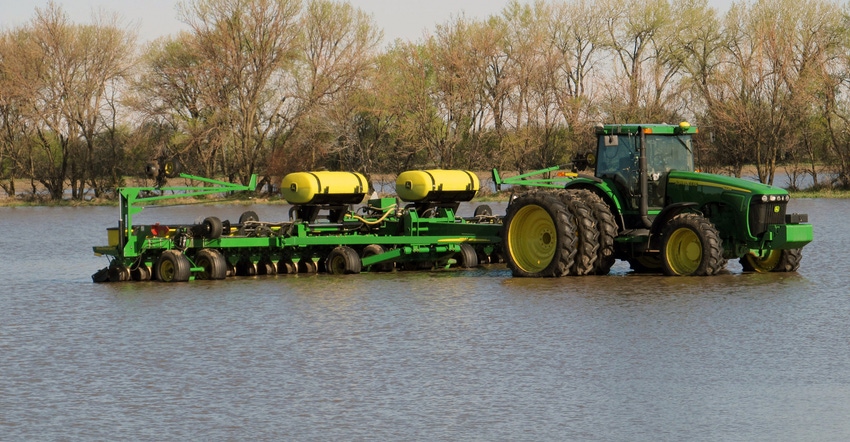
With 24% of the corn crop planted as of May 19 in Illinois, farmers are well below their five-year average progress of 89%, thanks to accumulated rain. Stormy forecasts extending through the end of May continue to slow progress, not only in Illinois, but also across the Corn Belt.
In National Agricultural Statistics Service data dating back 40 years, 2019 is the most delayed year on record for Illinois, with the next slowest year being 1995, when 37% was planted by May 19.
Scott Irwin, University of Illinois ag economist, says Illinois has a history of taking very few prevented planting crop insurance claims compared to other states. He predicts 2019 will be different.
“We’re facing the unprecedented situation of a large chunk of the U.S. corn crop either being planted in the first few weeks of June or not being planted at all,” Irwin says. “I’m very confident that prevented planting will be at a level in Illinois we have never seen before.”
Late-planted corn doesn’t always necessarily lead to poor yields, as growing season weather plays an important role too, but as farmers get closer to the middle of June, they may be more likely to take prevented planting claims or switch to soybeans.
Irwin notes that in 1995, crop insurance policies were different than they are today. More acres are insured today and at higher guarantee levels, resulting in prevented planting payments looking more favorable now than in 1995.
However, USDA’s 2019 Market Facilitation Program throws in a variable for farmers. The 2018 MFP primarily compensated soybean growers with $1.65 per bushel in response to tariffs, and it wasn’t available to farmers who were prevented from planting, because the payment was based on what was planted for that growing season and not the historic acreage and yield.
The 2019 MFP announced on May 23 is likewise not based on historic acreage. It will give farmers incentive to plant soybeans into late June as soils dry, instead of taking a prevented planting claim on corn.
“That’s very problematic, because we already have a huge surplus of soybeans, and we don’t need incentives for any additional soybean acres,” Irwin says.
As markets have taken notice of the likely unprecedented prevented planting claims for corn, Irwin concludes, “I’m bullish corn and bearish soybeans.”
About the Author(s)
You May Also Like




